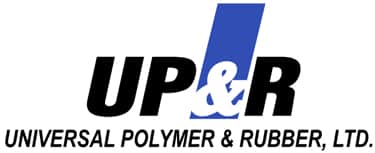Category Archive: Industrial Market Climate
If you look at the news and numbers focused around America’s auto industry, what you see, at first, is that it’s in a recovery phase, and that production is up.
This is true—July production was up by 10%, and overall production is up by about 7.5%.[1] However, as with anything, to get the full picture, you must really scratch beneath the surface. Major auto makers, such as Nissan and Chrysler, are seeing booming sales and therefore booming production. Likewise, if you’re a supplier working with them, then your business is booming accordingly.
But the fact is, these two companies make up a large part of the overall auto production, but they aren’t the only ones in existence. While their numbers contribute significantly to the statistics, there are plenty of other auto makers and suppliers that haven’t launched new models and seen sales skyrocket, and therefore are still in for a longer, slower recovery.
Articles such as this one point out that while Nissan is currently in the process of expanding its North American facilities, “the auto industry is in another, long-term disruptive phase” that can bring new opportunities, but other challenges as well. Mexico’s auto expansion, for instance, has “raised alarm bells.”
Additionally, while the auto suppliers, who are serving the needs of the few, highly successful auto makers, are therefore expanding, many others are “investing in new products and technological capabilities, not new bricks and mortar,” and are remaining cautious, as “history tells us that global political unrest or a sudden spike in fuel prices can put the brakes on sales momentum in a heartbeat.”[2]
The fact is, America’s auto industry is a great one, as are the numerous suppliers that keep it going. But while some can’t keep up with demand, plenty of others are still struggling, and it’s important to look beyond the surface numbers. It’s critical to examine all the facts and not assume that a few great success stories mean that everyone’s business is surging.
The hope is that we will all see continued recovery and success in the future, but we must also remain cautious and realistic, and not take everything at face value.
[1] https://www.industryweek.com/global-economy/strong-auto-production-spurs-us-factory-growth-july
[2] https://wardsauto.com/blog/wised-suppliers-expand-new-tech-not-more-volume
In many ways, manufacturing is the art of managing the unpredictable. In order to take a product or part from initial idea to completion, skill, hard work, and just a bit of luck are needed. There are a variety of things that can go astray during the manufacturing process; here are some of the more common ones:
Material Inconsistency
When working with a variety of suppliers, it’s difficult to sometimes keep track of all of the different parts and materials, and where they are coming from. When it comes to materials, they must be consistent to work; coordination with suppliers and ensuring the materials are of the same compound is essential and doesn’t always work out.
Weather
If the past winter has taught us anything, it is that weather cannot be counted on. Day after day of snow and frozen roads have stopped manufacturers in their tracks. In fact, U.S. manufacturing output fell sharply in January 2014 almost exclusively because of the cold weather, as seen in this article.
The Human Element
People do manufacturing, and people are not perfect. We all have bad days. While this variable is hard to control, you must take it into account in everything you do.
So, what is the answer? How can you avoid having your production lines come to a screeching halt? As we mentioned before, the key is preparation. You must do everything in your power to reduce the impact of these variables. It helps to have a couple of things locked down.
Preventative and Predictive Maintenance
If you keep your machinery in top shape at all times, you instantly lower the likelihood of a sudden breakdown. It really is that simple.
Proper coordination with suppliers
If you trust your supplier, it takes away a giant worry. If you know they are putting their reputation behind everything they send your way, it makes life so much easier. Plus, you also know they will go out of their way to make it right if something does go wrong.
At Universal Polymer, we believe that we fall into this category. We are the kind of company that will make every effort possible to eliminate worry from the equation. Our rubber and plastic extrusions and rubber moldings are of the highest quality and we stand behind everything we make. We can’t solve all your problems, but at least you will be able to trust your rubber and plastic gaskets, straps, and tubes!
As the new year begins, business and manufacturing is strong in a number of markets. At the end of every year businesses typically reduce their inventories to prepare for the end of the fiscal year. In 2012 those reductions started back in November as anxiety grew in anticipation of the fiscal cliff. Then towards the end of December, as word trickled out that things might not be as bad as everyone thought, we actually saw business pick up. Recovery is still moving slow, but it’s moving nonetheless and the market is beginning to react. Here at UP&R we serve businesses in a wide range of industries. Part of our job is keeping up with the changes in these market sectors, and adapting to best serve our customers.
Construction
After a lengthy depression we’re just starting to see improvement in the construction industry. Industry activity is up 10% to 20% year on year compared to 2011, but compared with 2007 numbers the industry is still at a historic low. But as numbers pick up we’re glad to see the first positive signs in years.
Tarp Straps
We’ve grown sales of our GOLDLINE® and SILVERINE® tarp straps by going head to head against Asian manufactured tarp straps. We’re proud of our tarp straps and plan to continue increasing sales, along with domestic production, in 2013.
Automotive
As the exchange rate between the dollar and the yen has shifted from favoring the dollar to favoring the yen, manufacturing parts in Japan has become exponentially more expensive than it has been in the past. For this reason we’re seeing a large trend towards manufacturing formerly done in Japan being brought to the U.S. Nissan is building a new plant in New Mexico and adding on to existing plants, and Toyota and Honda are moving the production of more vehicle models here as well. The associated tier 1, 2 and 3 automotive suppliers are following suit, moving new production to U.S. shores and increasing existing domestic production
As these and other industries begin to find their footing, we’re making sure to allocate resources accordingly to meet the needs of all of our customers.


